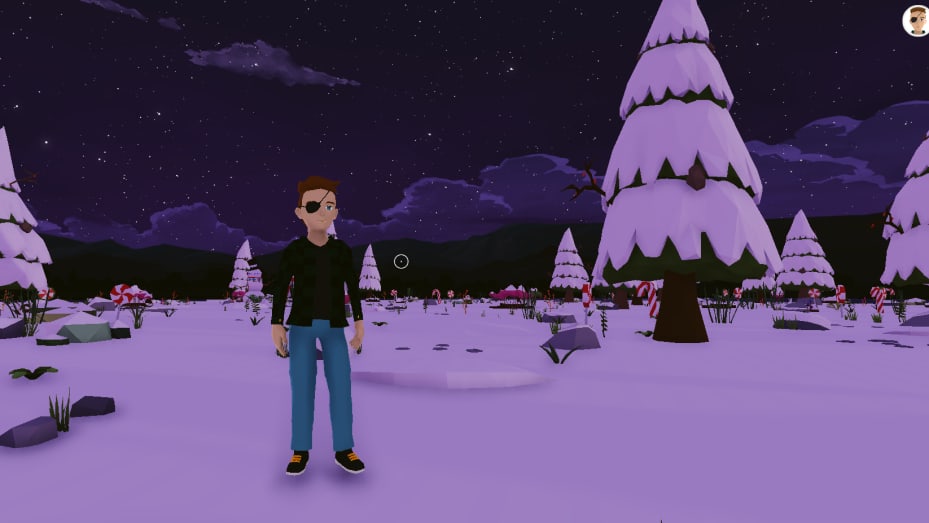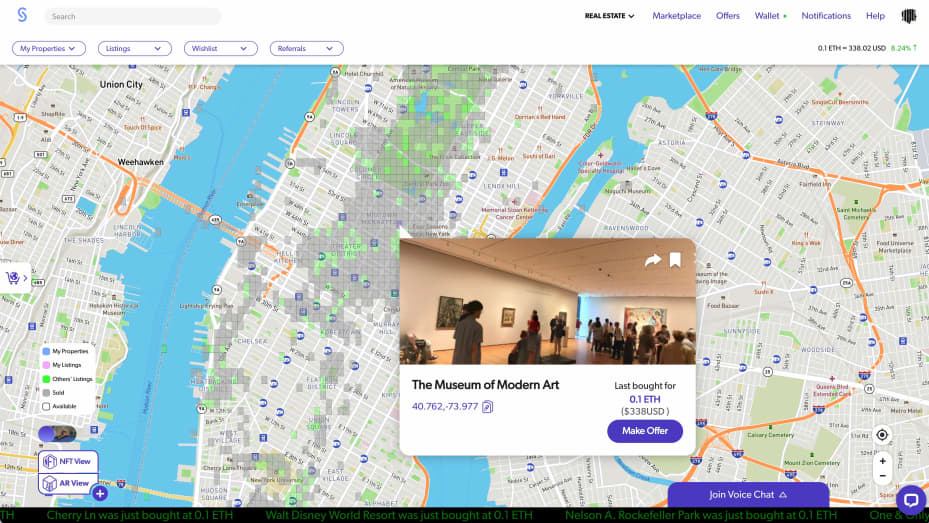In an interview, Tokens.com co-founder and CEO Andrew Kiguel said, “several big names are about to be part of an online fashion show” on the virtual plot, as reported by CNBC. Fashion labels like Tommy Hilfiger, Cavalli, Elie Saab, Dolce & Gabbana, Etro, and fragrance company Paco Rabanne have all signed up to participate starting March 24. The show will be for three days. The after-party will be sponsored by Mercedes-Benz.
Decentraland is a different kind of NFT. Here, you must use a form of digital currency called MANNA, which can be purchased only with Bitcoin or Ethereum.
Users can then go to the site to see what’s for sale. The parcels have been purchased already, but many are available secondhand. The price fluctuates just like real estate in the physical world.
“Decentraland has 45,000 properties you can buy, 45,000 little pixels,” he said. “There’s actually 90,000 pixels up on the board, but some of them are not for sale like lakes, rivers, trees, the fountains in the downtown core, these are the areas that are kept by the foundation for beautification purposes.”
Decentraland’s creators’ code is limited. Hence, it will not expand and is limited, like in the real world.
“The museum district has a whole bunch of NFTs and things on display, so when you’re walking through, it’s a little bit like being in a city, you see a building here you see something else there,” says Kiguel.
Amusement parks and other attractions also exist, designed to draw people and their digital representatives, called avatars, into the action.
Another virtual land is made by Hrish Lotlikar, co-founder and CEO of SuperWorld, who designed a system that takes space in the physical world and allows users to buy the virtual equivalent on city blocks.
Lotlikar describes his metaverse as “being built on top of the real world.” Blocks sell at an original price of $390, but the value increases or decreases in the second market.

“When you’re buying land, what you’re buying is a nonfungible token,” said Lotlikar in an interview earlier this month. “You’re buying a digital asset that allows you to earn a share of all of the economics that happened on that plot of land.”
SuperWorld makes money by taking a 10% cut of all business done on anyone’s property and by taking another 10% when land is transferred through sales.
Brad Oberwager, the executive chair of Linden Labs, which owns Second Life told CNBC in a recent interview, “the metaverse isn’t a game, you don’t play in Second Life, you reside in it.” Oberwager criticized the price volatility in new metaverse sites, saying “if the value of the house that I rent went up and down 50% in a day, I couldn’t live like that.”
In Second Life customers rent land and build on it. Oberwager says Second Life is now a $650 million real economy.
Tokens.com has paid more than $2 million for space in Decentraland which is one of several burgeoning platforms in the metaverse, in November of last year.
In an interview, Tokens.com co-founder and CEO Andrew Kiguel said, “several big names are about to be part of an online fashion show” on the virtual plot. Fashion labels like Tommy Hilfiger, Cavalli, Elie Saab, Dolce & Gabbana, Etro, and fragrance company Paco Rabanne have all signed up to participate starting March 24. The show will be for three days. The after-party will be sponsored by Mercedes-Benz.
Decentraland is a different kind of NFT. Here, you must use a form of digital currency called MANNA, which can be purchased only with Bitcoin or Ethereum.
Users can then go to the site to see what’s for sale. The parcels have been purchased already, but many are available secondhand. The price fluctuates just like real estate in the physical world.
“Decentraland has 45,000 properties you can buy, 45,000 little pixels,” he said. “There’s actually 90,000 pixels up on the board, but some of them are not for sale like lakes, rivers, trees, the fountains in the downtown core, these are the areas that are kept by the foundation for beautification purposes.”

Decentraland’s creators’ code is limited. Hence, it will not expand and is limited, like in the real world.
“The museum district has a whole bunch of NFTs and things on display, so when you’re walking through, it’s a little bit like being in a city, you see a building here you see something else there,” says Kiguel.
Amusement parks and other attractions also exist, designed to draw people and their digital representatives, called avatars, into the action.
Another virtual land is made by Hrish Lotlikar, co-founder and CEO of SuperWorld, who designed a system that takes space in the physical world and allows users to buy the virtual equivalent on city blocks.
Lotlikar describes his metaverse as “being built on top of the real world.” Blocks sell at an original price of $390, but the value increases or decreases in the second market.
“When you’re buying land, what you’re buying is a nonfungible token,” said Lotlikar in an interview earlier this month. “You’re buying a digital asset that allows you to earn a share of all of the economics that happened on that plot of land.”
SuperWorld makes money by taking a 10% cut of all business done on anyone’s property and by taking another 10% when land is transferred through sales.
Brad Oberwager, the executive chair of Linden Labs, which owns Second Life told CNBC in a recent interview, “the metaverse isn’t a game, you don’t play in Second Life, you reside in it.” Oberwager criticized the price volatility in new metaverse sites, saying “if the value of the house that I rent went up and down 50% in a day, I couldn’t live like that.”
In Second Life customers rent land and build on it. Oberwager says Second Life is now a $650 million real economy.


